Airbags are an important safety feature in any car. They can help protect you in the event of a collision. That’s why it’s important to know what to do if your airbag warning light comes on. In this blog post, we will discuss six reasons why your airbag warning light might be on. We’ll also provide tips on how to fix the problem.
A rusted airbag sensor is the number one reason why the airbag warning light is on. The airbag sensor is located in the front of the vehicle where all the road salt and moisture builds-up, causing the sensor to become rusty and trigger the airbag warning light.
Key Takeaway
- The airbag inflator could be faulty and trigger the warning light.
- The electrical harness that delivers power to the airbag sensor could be faulty.
- Impact sensor malfunctioning can cause the airbag warning light to turn on.
- The SRS airbag module that controls the timing of airbag deployment could be faulty causing the warning light to come on.
- The clock spring that provides power to the airbag module could malfunction and trigger the warning light.
- A faulty seat occupancy sensor can become damaged by constantly moving the seat forward and backward and can trigger the airbag warning light.
6 Reasons Why Your Airbag Warning Light Is On
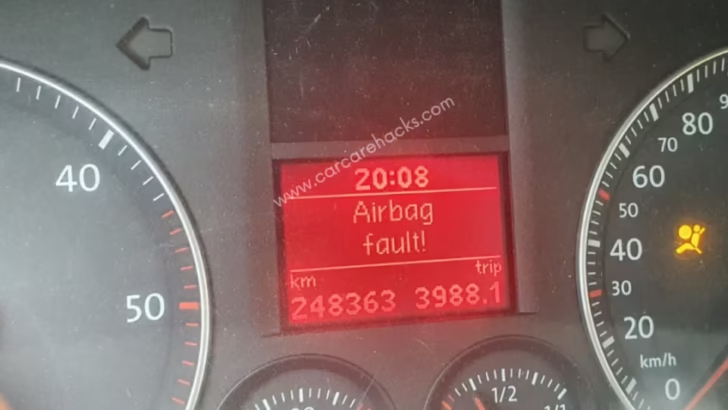
In a case of an accident, the airbags are deployed at a speed of 320km/hr and act as a cushion to prevent the driver and the passenger from hitting the steering wheel and the dashboard. However, over time, the airbag system can fail and cause a warning light to come on. Here are six reasons why your airbag warning light is on.
1. Faulty airbag inflator
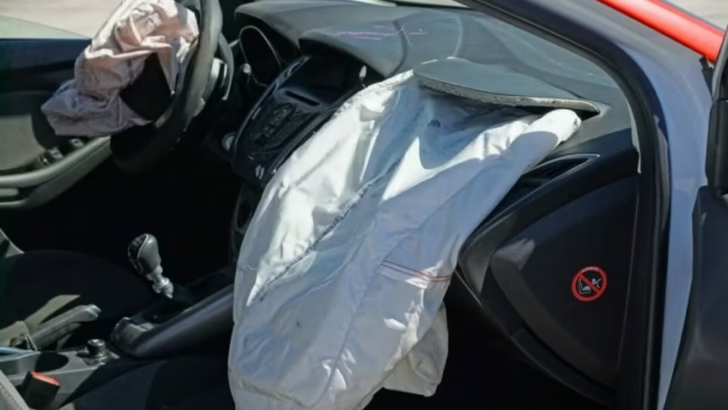
Every time you start your car, the vehicle performs a system check to make sure that the airbag inflator is working properly. If the airbag inflator is faulty, this data will be transferred to the vehicle module and an airbag warning light will be triggered.
An airbag inflator is an important (and mandated!) part of any vehicle today. The airbag inflator is responsible for creating a cushion of air when an accident or collision occurs, which helps to protect the occupants from serious injury.
This happens when a crash occurs and sensors detect a rapid rise in acceleration. Then, a signal is sent through the system that causes an electrical current to set off an explosive charge inside the inflator.
This charge ignites small amounts of sodium azide stored within the inflator, causing it to rapidly expand into a gas that rapidly fills the bag with many times more pressure than regular airflow alone could provide – quickly providing much-needed protection for all occupants in the vehicle.
2. Bad airbag sensor harness
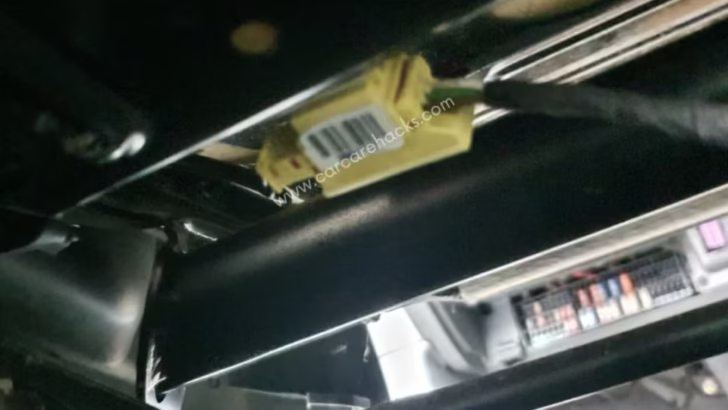
The airbag sensor has an electrical connector that supplies power to the sensor. If the electrical harness is faulty, the airbag sensor isn’t able to perform as it should which will get reported to the vehicle’s computer and a warning light will be triggered.
The airbag sensor gets power supplied through a pre-tensioner circuit. It runs off the same battery power that runs the car’s motor. This small but powerful charge supplies just enough energy for the airbag sensors to spring into action and deploy quickly and efficiently when necessary.
3. Bad impact sensors

When the impact sensors in an airbag system fail, it can result in devastating consequences. If an accident were to occur, the lack of a functional sensor may cause the car’s airbags not to deploy at all, or deploy with too much force far beyond what is intended for safety. However, the vehicle’s computer is able to alert the driver by illuminating the airbag warning light.
Through sophisticated technology, car manufacturers use sensors to detect when a collision has occurred in order to deploy an airbag. The sensors detect the pressure or movement between parts of a car, or with an object that it has collided with.
This data is analyzed by computers which determine whether to deploy an airbag or not at millisecond intervals. In this way, airbags are deployed before any passenger’s body can hit the dashboards or other surfaces within the vehicle during a crash.
4. Faulty SRS airbag module
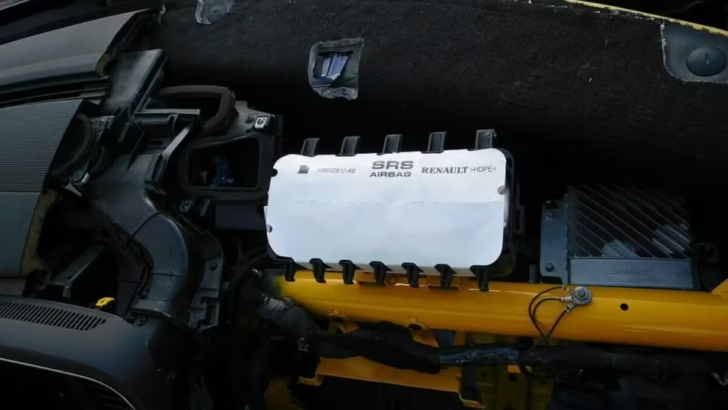
When the SRS airbag module fails, a warning light will come on, alerting drivers to the issue and reminding them to have it inspected by a qualified mechanic as soon as possible. Unfortunately, this failure can render the airbags useless during a crash, which could lead to serious injury to passengers.
The SRS airbag module contains a computerized algorithm that controls the deployment and timing of the Supplemental Restraint System (SRS) airbag in a vehicle. It is designed to provide extra protection for occupants in the event of an automobile accident.
The SRS airbag module works by detecting a sudden deceleration and then deploying the airbags at the precise moment when maximum protection is needed. It’s important to note that the amount of time it takes from the moment of impact to when the airbag actually inflates is dependent on various factors, including vehicle speed and angle of impact.
5. Broken clock spring

When the clock spring in the airbag of a vehicle fails, a warning light on the dashboard will illuminate to notify the driver that the airbag is no longer functional. Not only does a failed clock spring render the airbag useless during an accident, but depending on where and how severely the clock spring was damaged, other essential components of your car such as the steering can be affected.
The purpose of a clock spring in airbags is to provide power to the airbag module. The clock spring is a spiral-shaped vinyl ribbon spooled into a coil that contains conductive material that connects the airbag module to the wiring harness and adds electrical continuity when it is connected to the steering wheel.
This allows for continuity of control signals from the electric rack and pinion assembly, the electric brake switch, and various other components even when the steering wheel turns from side to side. Essentially, this allows for all of these vehicle systems to work together harmoniously without interruption, so that if an accident occurs, an airbag will be deployed effectively with minimal delay.
6. Faulty seat occupancy sensor
When the seat occupancy sensor fails, it is usually indicated by an airbag warning light that appears on the dashboard of your vehicle. This warning light alerts you that the system related to the airbag has detected a malfunction with the seat occupancy sensor. Depending on the make and model of your vehicle, this can be caused due to any number of things such as a broken wire or faulty sensor.
The seat occupancy sensor is a device that helps vehicles monitor and controls the number of passengers inside. It works in a way that detects changes in weight when someone sits down or stands up inside the vehicle, via tiny pressure-sensitive pads located under the passenger’s seat cushion.
Once detected, this will inform the vehicle’s computer if there are any irregularities with regard to how many people are inside the car versus what has been programmed at start-up. This can help keep everybody safe in the case of emergency braking or other sudden movements.
Is It Safe To Drive With Airbag Light On?

It is not safe to drive with the airbag light on because that light is alerting you that your airbag system is not functioning properly and airbags won’t deploy in case of an accident. You should get your vehicle checked out by mechanics and fix whatever is causing the warning light to come on.
The airbag system in cars is a complex and genius invention that helps protect drivers and passengers from injury. Airbags deploy from the steering wheel, dashboard, and side panels when an accident occurs to keep occupants from making direct contact with components of the interior.
An associated sensor recognizes signs of impact and immediately triggers the inflation of these safety devices. Once triggered, the bags are filled with gas coming from a restraint control module. This all happens within milliseconds, reducing potential physical harm significantly.
While airbags can save lives, they do require regular servicing to ensure that they are functioning properly. This type of maintenance keeps drivers safe during those moments when a potential accident has just occurred or is imminent.
The airbag system is running a check each time you turn on your vehicle. If there is something wrong with one of the components, the vehicle’s computer is going to trigger a warning light. This way, you are being alerted that the airbag system is not working. You shouldn’t drive your vehicle without the airbags because of a safety risk.
How Do I Get My Airbag Light To Turn Off?

Every time you start your vehicle, you should see the airbag light turn on for a few seconds and then turn off if everything is alright. The reason behind this is the vehicle’s computer is doing a diagnostic check on the airbag system. If the airbag light stays on after a few seconds, there is something wrong with the airbag system, and here is how to turn it off.
1. Scan the vehicle for trouble codes
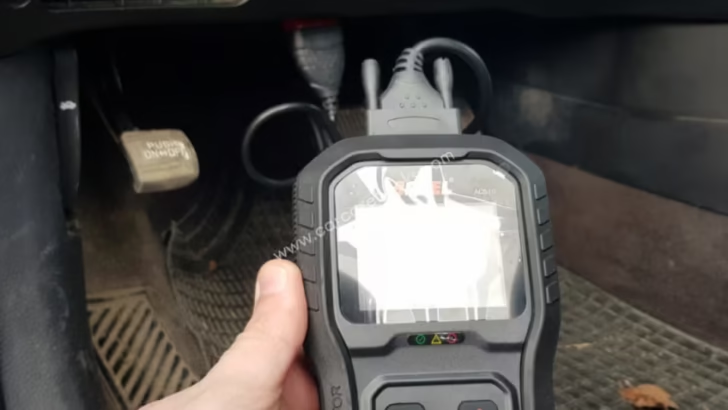
First, you need to scan the vehicle for trouble codes and see if any airbag-related codes come up. This will help you pinpoint the problem. The most common diagnostic trouble code related to the airbag system will start with a B19(0,1,2,3,4,5,6-27). Hook up an OBD2 scanner to the vehicle’s computer port and run a scan. On this scan, you will get something like a Passenger side airbag fault or Driver side airbag fault.
2. Locate the airbag harness connector under the seat

The most common cause of an airbag turning on is due to the airbag wiring harness found underneath the driver’s seat or the front passenger seat. This wiring harness is usually yellow in color and easily detectable.
3. Disconnect and inspect the wiring harness
The reason why the airbag wiring harness gets damaged so often is that moving the seat back and forward, or storing something underneath the sit and accidentally hitting the wiring harness. This is why it is important to be careful when you are vacuuming under the seat and avoid connection problems.
4. Clean the wiring harness and reconnect it
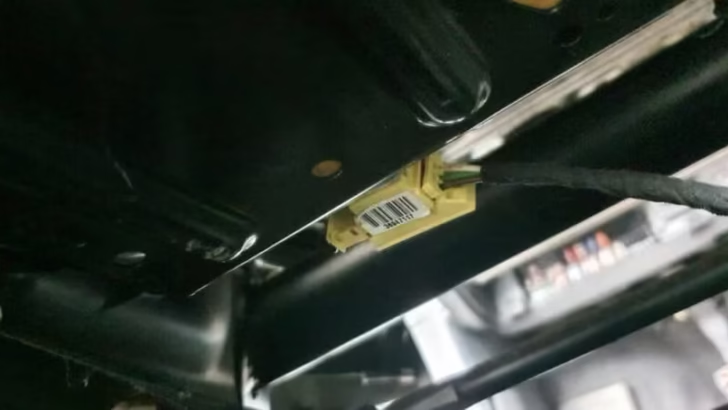
Most of the time, the airbag wiring harness is just dirty from dust or it is slightly disconnected by getting hit with a water bottle or something else underneath the seat. If there is no visible damage on the wiring harness, blow any dust with some air and reconnect it. Make sure that it clips into place.
5. Start your vehicle
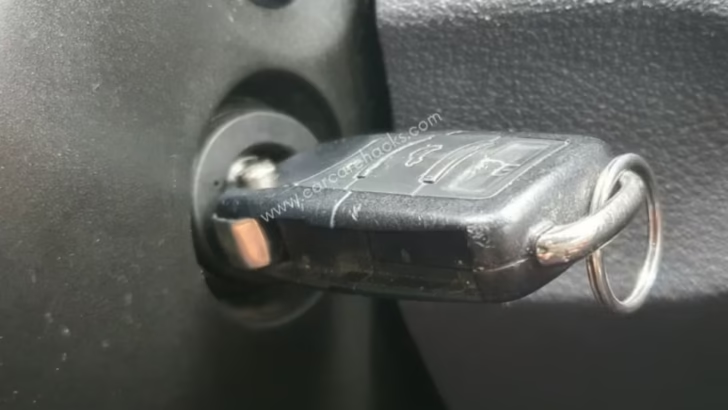
Start your vehicle and let it run for a minute. At this point, the vehicle’s computer will have to run up to thirty checks to make sure that the airbag system is working properly before turning off the airbag light. So, just wait for a minute and the airbag light should be turned off.
